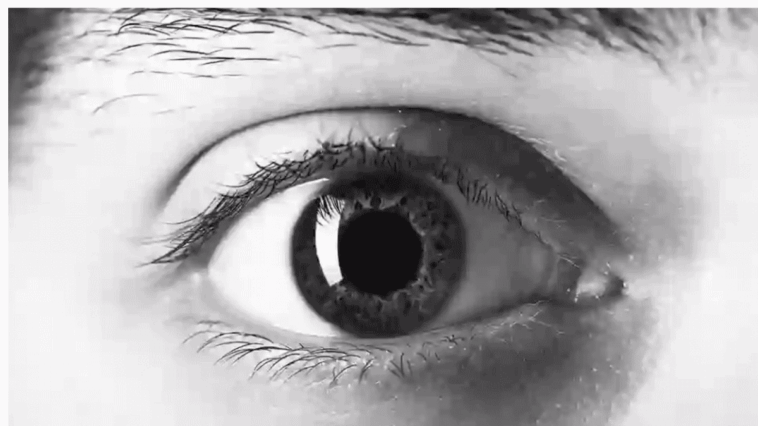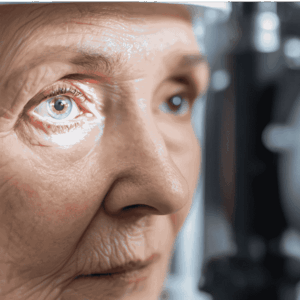Contents
hide
Understanding Optic Disc Swelling
If your eye doctor finds optic disc swelling, it means that fluid or pressure is affecting the start of your optic nerve. The optic nerve sends visual information from your eye to your brain.
Optic disc swelling is not a disease in itself. It is a warning sign that something else is affecting the optic nerve, often because of increased pressure inside the skull. Finding the cause early is important to protect your vision and brain health.
What Is Papilledema?
Papilledema is a kind of optic disc swelling that happens when the pressure inside the brain, known as intracranial pressure, increases.
If pressure inside the brain rises because of a tumor, bleeding, infection, or a condition called idiopathic intracranial hypertension, that pressure can travel along the optic nerve and cause it to swell.
Papilledema is a medical emergency and needs prompt treatment to prevent permanent vision loss. It usually affects both eyes, which helps doctors determine that the problem is originating from pressure inside the skull, not just the eye.
Other Causes of Optic Disc Swelling
Not every case of optic disc swelling is papilledema. Other common causes are:
- Inflammation (optic neuritis): Autoimmune or post-viral inflammation (e.g., multiple sclerosis, viral infection).
- Ischemic optic neuropathy: Reduced blood flow to the optic nerve in older patients with hypertension or diabetes.
- Toxic or nutritional optic neuropathy: Due to methanol, ethambutol, or vitamin B12 deficiency.
- Compressive lesions: Tumors or thyroid eye disease pressing on the optic nerve.
- Pseudopapilledema: Benign appearance of a “swollen” nerve caused by optic disc drusen (calcified deposits).
Each of these conditions requires different tests and treatments. Receiving the correct diagnosis is crucial for receiving proper care.
Symptoms of Optic Disc Swelling
Symptoms can vary depending on the cause and the rate at which the swelling develops. Some people notice changes right away, while others may not realize there is a problem until it becomes more severe.
Common symptoms include:
- Blurred or dim vision
You may notice your vision getting worse, especially when trying to see small details. - Transient visual obscurations
These are brief episodes where you lose vision or have a blackout, often when you stand up, bend over, or cough.
This symptom often happens in people with papilledema. - Headache
Headaches often feel like a deep pressure behind the eyes. They may be worse in the morning or when lying down, which can be a sign of increased intracranial pressure. - Nausea or vomiting
Nausea and vomiting can occur along with headaches when there is high pressure in the brain. - Double vision
Swelling can affect the nerves that control eye movement, potentially causing the eyes to become misaligned and resulting in double vision. - Reduced color vision
Colors, especially reds, may appear less bright or look faded. - Enlarged blind spot (on visual field testing)
You may not notice this change yourself, but an eye doctor can detect it during a visual field test.
If you have headaches and changes in your vision, especially if you sometimes lose vision for a short time, see an eye doctor as soon as possible.
Sometimes, optic disc swelling indicates high pressure in the brain. This needs quick medical attention to prevent vision loss.
How Eye Doctors Diagnose Optic Disc Swelling
A thorough eye and nerve exam is needed to find the cause of the problem.
Using an ophthalmoscope, the doctor checks the optic disc for signs of:
- Blurred borders and elevated disc
- Engorged veins and hemorrhages
- Retinal folds (Paton’s lines)
2. Optical Coherence Tomography (OCT)
Optical coherence tomography (OCT) takes detailed images of the optic nerve. It helps measure swelling and indicates whether the swelling is real or merely apparent.
3. Visual Field Testing
This test can help identify a larger blind spot and loss of side vision.
4. Neuroimaging (MRI or CT Scan)
Brain scans help look for tumors, bleeding, or blood clots in the brain.
5. Lumbar Puncture
If brain scans look normal but doctors still think there is high pressure, they may test your spinal fluid. This can confirm high pressure and sometimes help lower it.
When to Seek Emergency Care
Call an eye doctor right away if you have any of these symptoms, as they could mean a higher risk:
- Sudden vision loss or double vision
- Severe headache with vomiting, pain behind the eyes (especially if it wakes you from sleep), or rapidly deteriorating vision
These symptoms may be signs of serious brain problems, such as a tumor or a blood clot.
Treatment Options
Treatment will depend on the cause of the swelling and its severity.
1. Papilledema (from Raised Brain Pressure)
- Treat the underlying cause, such as removing a tumor, using antibiotics for infection, or taking anticoagulants for blood clots.
- Medications like acetazolamide or topiramate can help lower pressure by reducing the amount of cerebrospinal fluid produced by the body.
- If you have idiopathic intracranial hypertension, your doctor may recommend losing weight and following a low-salt diet.
- If there is a risk of losing vision, surgery such as making a small opening in the optic nerve sheath or placing a shunt to drain fluid may be needed.
2. Optic Neuritis (Inflammatory Cause)
- Doctors may give high doses of steroids through a vein to reduce inflammation.
- Your eye doctor may also check for multiple sclerosis or other autoimmune diseases.
3. Ischemic Optic Neuropathy
- If the cause is arteritic, such as Giant Cell Arteritis, immediate steroid treatment is necessary.
- It is essential to manage blood pressure, diabetes, and cholesterol effectively.
4. Toxic or Nutritional Neuropathy
- Stop taking the harmful substance, like ethambutol or methanol, as soon as possible.
- Take vitamin B12 supplements and make sure you are getting enough nutrition.
5. Pseudopapilledema
- No active treatment is necessary, but regular eye exams and OCT scans are recommended to monitor the condition.
Living with Optic Disc Swelling
It is important to have regular eye exams and follow up with your neurologist. You should also:
- Keep systemic diseases well controlled.
- Stay well-hydrated and maintain a balanced diet.
- Follow your prescribed treatments closely.
- Avoid smoking and limit alcohol use.
If treated quickly, vision can often recover. Delaying treatment can lead to nerve damage and permanent vision loss.
Key Takeaways
- Optic disc swelling is a symptom, not a disease. It means there is pressure or damage to the optic nerve.
- Papilledema is always an emergency. It means there is increased pressure inside the brain.
- Early eye exam and neuroimaging are essential for proper diagnosis.
- Treatment depends on the cause. Sometimes, it is as simple as monitoring, and at other times, urgent steps are needed to lower brain pressure.
- With prompt treatment, most people can recover their vision or prevent it from worsening.
Frequently Asked Questions (FAQ)
Can optic disc swelling cause permanent blindness?
Yes, especially if caused by papilledema or ischemic optic neuropathy and left untreated.
Yes, especially if caused by papilledema or ischemic optic neuropathy and left untreated.
Is papilledema painful?
The swelling itself is not painful, but the underlying brain pressure often causes headache and nausea.
The swelling itself is not painful, but the underlying brain pressure often causes headache and nausea.
How is optic disc swelling detected early?
Optic disc swelling is typically detected through routine eye examinations and fundus photography or by using OCT. It may not be noticeable to the patient until it is advanced.
Optic disc swelling is typically detected through routine eye examinations and fundus photography or by using OCT. It may not be noticeable to the patient until it is advanced.
Can optic disc swelling be prevented?
Managing blood pressure and diabetes, as well as avoiding toxic substances, can help reduce the risk of complications associated with these conditions. There is no universal prevention for papilledema.
Managing blood pressure and diabetes, as well as avoiding toxic substances, can help reduce the risk of complications associated with these conditions. There is no universal prevention for papilledema.
Will vision return after treatment?
Often, yes, if the nerve fibers are not irreversibly damaged and pressure is relieved promptly.
Often, yes, if the nerve fibers are not irreversibly damaged and pressure is relieved promptly.





